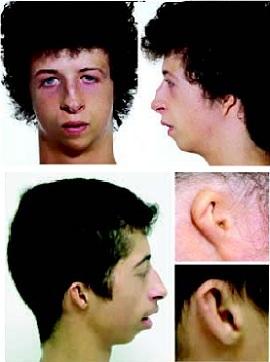Using AI to control energy for indoor agriculture
30 September 2024
Published online 28 February 2011

Primordial dwarfism is a group of disorders that result in slowed growth and smaller body sizes in humans which start taking place prenatal. Meier-Gorlin syndrome is one form of the condition, characterized by people having small ears and under-developed kneecaps.
Two studies published this week in Nature Genetics reveal the genetic mutations at fault and involve researchers from King Abdulaziz University, Jeddah and Dhahran Health Center, Dhahran, Saudi Arabia.
In one of the studies1, researchers looked at the genome of nine members of a consanguineous Saudi Arabian family, two of whom had primordial dwarfism syndrome. They identified mutations in the gene ORC1, which encodes a subunit of the origin recognition complex, one of the components involved in the initital stage of DNA replication. The mutated ORC1 causes the cell problems in passing through the synthesis phase (S-Phase) of the cell cycle in which DNA is replicated. In further analysis, the depletion of ORC1 in a zebrafish model showed a significant reduction in growth.
"It is the existence of large consanguineous families with more than one affected child that really help in realizing you are dealing with something new," said Mark O'Driscoll, a geneticist at the University of Sussex, Brighton, UK and a co-author of the paper on mutations in ORC1.
In the other study2, researchers screened 18 individuals diagnosed with primordial dwarfism to search for any other genes responsible for the syndrome. Besides ORC1, they found mutations in four other genes, ORC4, ORC6, CDT1 and CDC6I. These genes also encode components involved in the pre-replication complex, which suggests that impaired replication is a cause of growth failure. The mutations all led to symptoms typical of Meier-Gorlin syndrome, but with varying degrees of severity in height, head circumference and cognition of affected individuals.
According to the researchers, the impaired replication might be expected to affect growth in all organs and tissues in the body equally. However, certain tissues were found to be disproportionately affected in people with Meier-Gorlin syndrome. Ears and patellae were the worst, but in more severe cases, the brain was also reduced in size.
"What the findings show is that some tissues, for as yet unknown reasons, appear to be disproportionately affected," said O'Driscoll.
The researchers suggest that certain cell types, such as chondrocytes, which are prevalent in ears and kneecaps, are more sensitive to an impaired pre-replication complex. They suggest that further investigation into the relationship between DNA replication, development and growth could answer this question in the future.
doi:10.1038/nmiddleeast.2011.24
Stay connected: